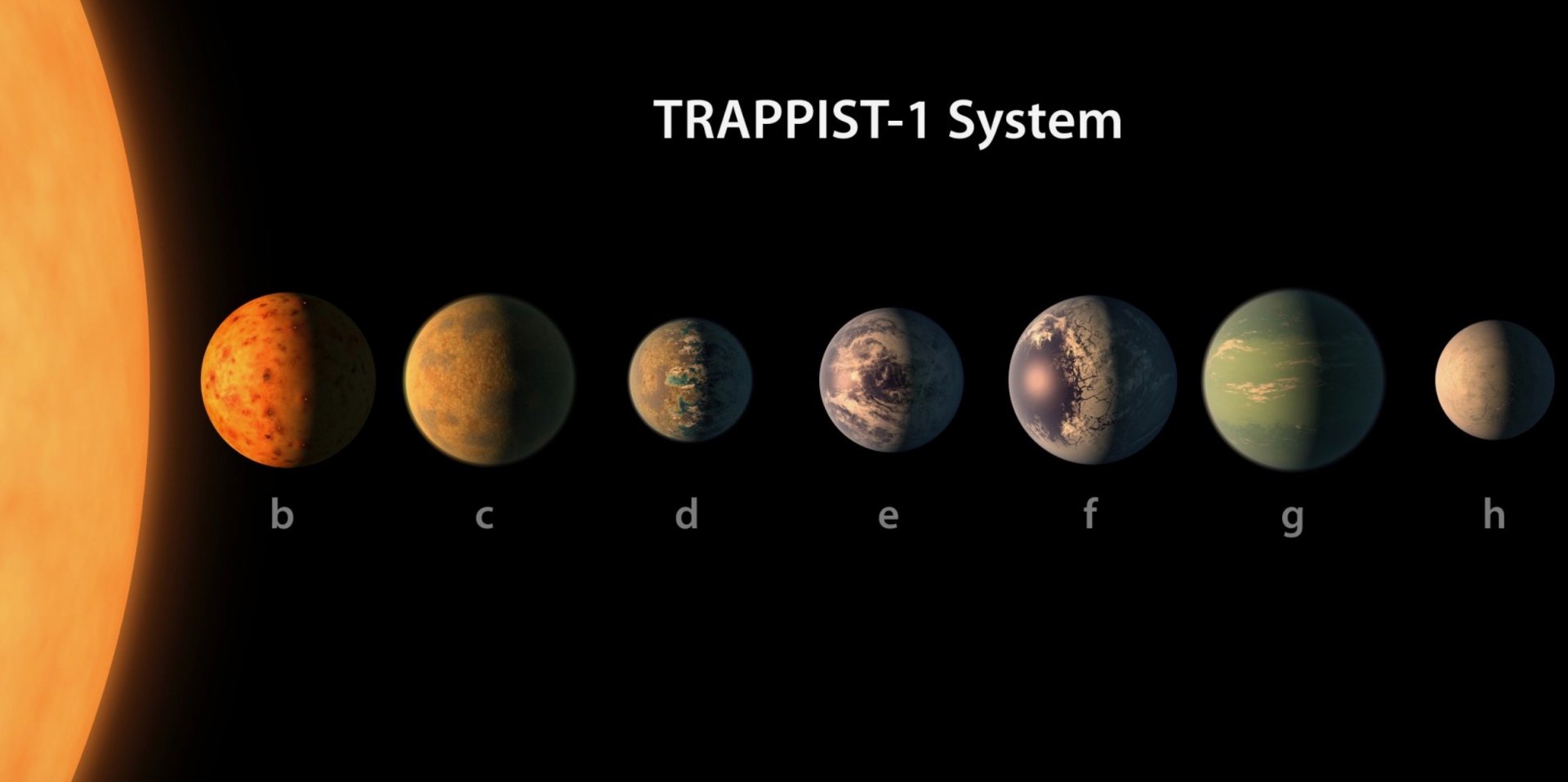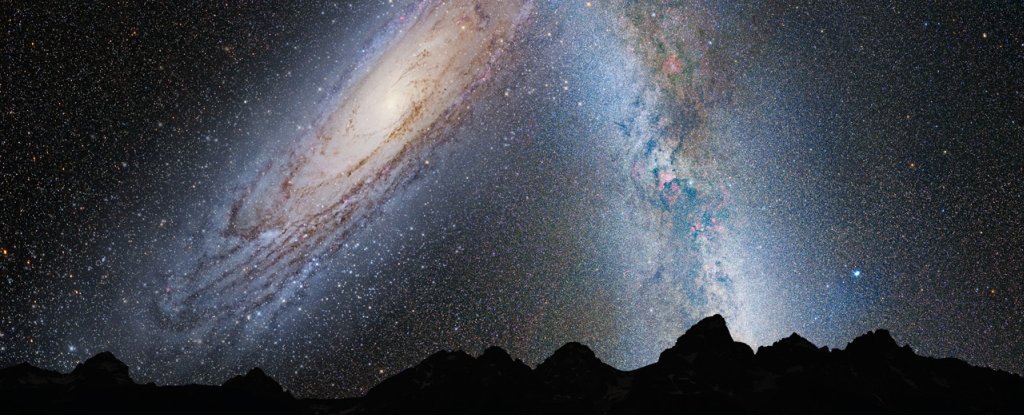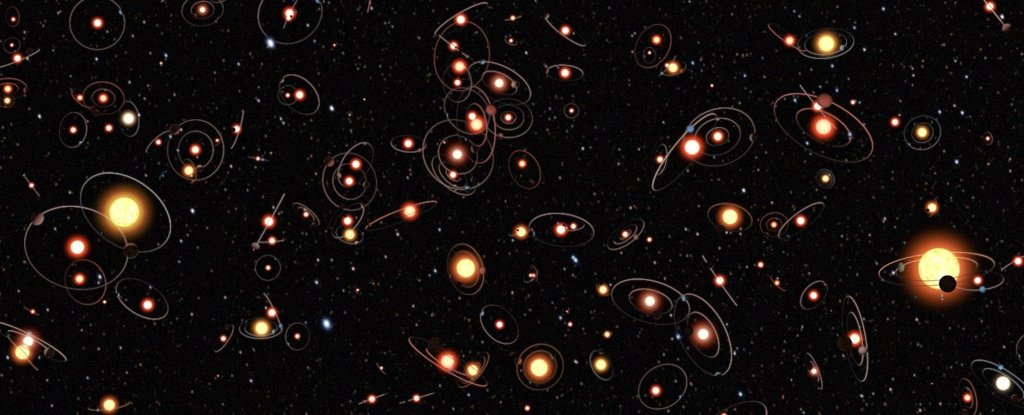Astronomers: two planet system TRAPPIST-1 habitable
 Source:
Source:
Last year, NASA astronomers have discovered a planetary system with seven earth-like planets. Called TRAPPIST-1 system not only has the largest number of earth-like worlds orbiting within the system, but also contains the largest number of planets, the so-called "habitable zone" of stars, a region where not too hot or too cold, and on the surface of planets might have water and the necessary conditions for the existence of life.
Conducting a study of three potentially habitable planets in the system are TRAPPIST-1, scientists have discovered new evidence that at least two of them can really support life. About their work, the scientists shared in the journal Astronomy & Astrophysics.
For their study, a team of astronomers under the guidance of planetary Geophysics AMI Barrels of Planetological Institute of the USA first created a mathematical model of the seven planets TRAPPIST-1, as well as their Geology. Using these models, scientists have determined that six of these worlds can have on the surface water either in the liquid or in the solid state, and one planet in General can be home to a global ocean.
The Next step of the scientists was to determine the surface temperature of each of the planets. Worlds in the system of TRAPPIST-1 have a very unusual, egg-shaped orbits, forcing them a little to stretch it a little to shrink, thereby creating a heating of the surface and internal composition. This phenomenon is known as tidal heating, and causes to increase the external temperature of the planet, and contributes to the running of different chemical processes and the movement of the mantle layers, which creates conditions favorable for life as it happens on Earth.
"This is one of the main discoveries. Planet also are on eccentric orbits, egg-shaped, so every time a planet passes a star, it stretches and shrinks," said Barr in an interview with the Guardian.
Scientists have determined that the planets b, C, d and e experience tidal heating. Researchers believe that the planets b and c are experiencing a tidal heat, and planet c is probably almost no water and mainly consists of iron and stones. However, the planet d, and e are exposed to tidal heating is much smaller than the other, and they can be the most suitable for life.
Barr told the newspaper the Guardian that the planets d and e, are "in this type of region", are "very reasonable surface temperatures". Astronomers believe that the average temperature on the planet's surface d may be about 15 degrees Celsius, or perhaps slightly warmer than the melting point of ice. Planet e, according to Barr, in turn, is somewhat colder, and the temperature on its surface can be similar to the average values characteristic of the earth's Arctic regions.
Currently, mathematical modeling is the most effective method of studying the probable features of the planets in the system are TRAPPIST-1, however, it leaves some significant gaps in our knowledge, such models cannot answer the question about whether any of these planets atmosphere.
Fortunately, in development there are several projects that will allow you to observe and explore distant worlds with even greater levels of detail. One such project is unfinished Space telescope James Webb (JWST). Its launch is expected by astronomers from around the world and is scheduled for early 2019. One of the key objectives of the study will be just exoplanets, including TRAPPIST and system-1.
In Addition to JWST, is expected to open in the near future and several new ground-based observatories. They, too, will make a significant contribution to the study of exoplanets. For example, the Giant Magellan telescope and the European extremely large telescope should start in 2025 and 2021, respectively, and will be able to tell more about the potential habitability of planets is described today.
Studies of exoplanets are still at an early stage. The first confirmation of the existence of exoplanets scientists occurred only in 1992. Since then, astronomers have confirmed the existence of planets among the 3726 2792 systems, only 20 of which are considered potentially habitable by scientists. With the development of technology and creation of new tools to find other worlds we can learn much more about what surrounds us in this Universe.
Recommended
We seriously overestimated the size of the galaxy Andromeda, scientists say
Using a new method to measure the mass of galaxies, astronomers came to very interesting conclusions. It turns out that our nearest neighbor, the Andromeda galaxy, not much larger than our milky Way and not in two or even three times as much as previ...
Space telescope "Kepler" confirmed the existence of exoplanets 100
an international team of astronomers reports that the number of detected exoplanets has increased by almost a hundred, thanks to the continuing mission K2 space telescope "Kepler" space Agency NASA. After analyzing the latest data collected with the ...
Russian scientists created an effective protection of the courts from biofouling
Biogrowth is a process in which the surface of the hull or other structures residing in the aquatic environment, begin to multiply different organisms. In the case of ships, as a rule, bivalves (gressani, clams, ship worms, etc.), barnacles, polychae...
Related News
To AI was creative, he must learn to break the rules
Each artist once something started. Today we can apply this popular expression against the machines. You need to create creative artificial intelligence? Sometimes it seems that the difference between machines from man to machines...






















Comments (0)
This article has no comment, be the first!